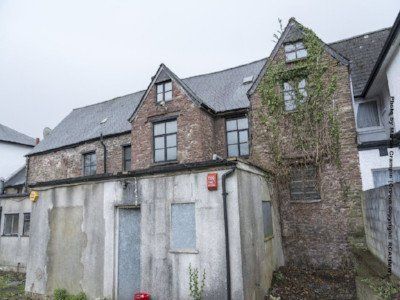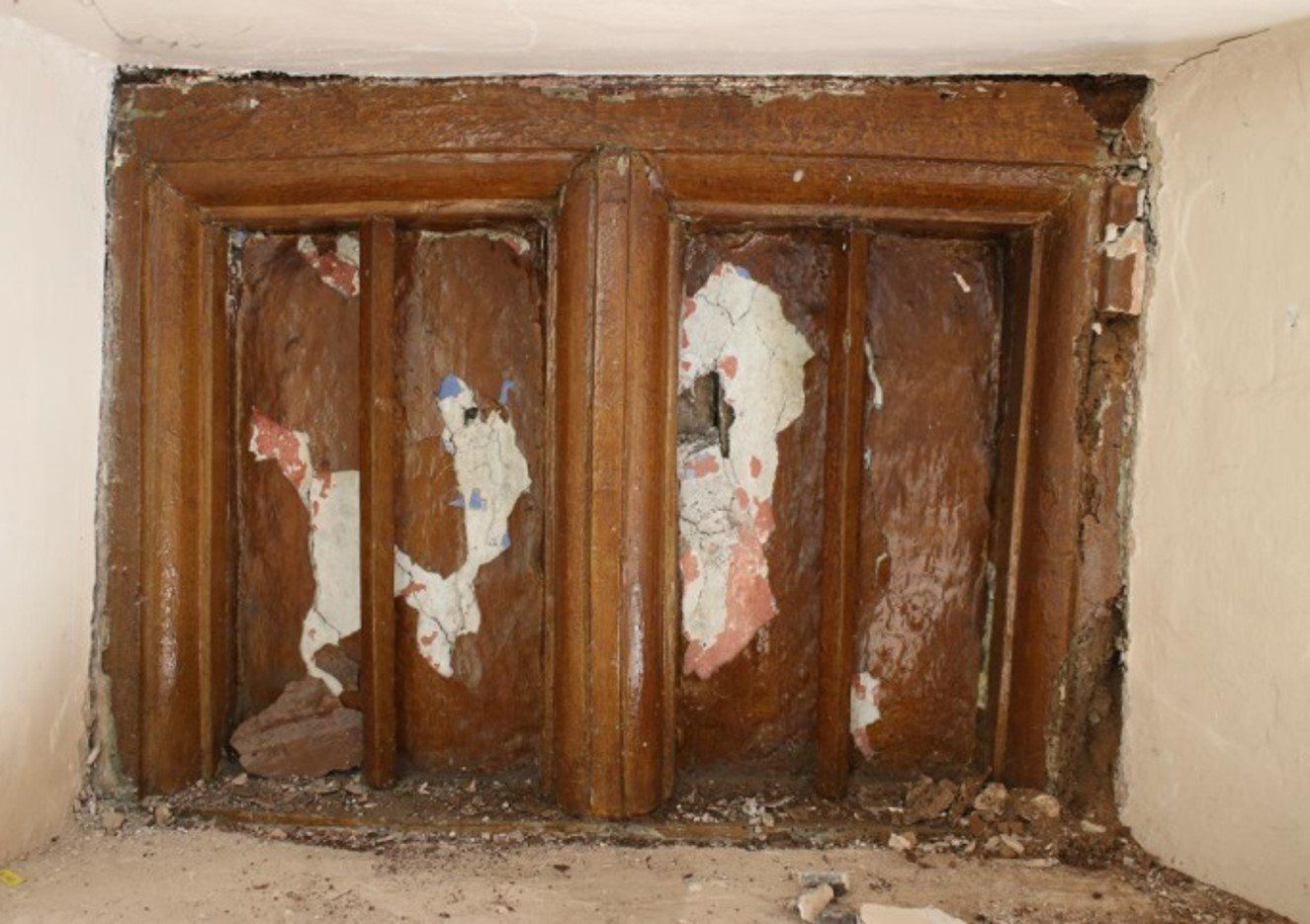How old is Plas Gunter Mansion
and how do we know?
Tree ring dating, also called dendrochronology, is (unsurprisingly) based on the analysis of tree rings. One ring is produced each year and is influenced by the growing conditions. A warm, wet spring and summer gives better growth and produces wider rings. Hot, dry summers or cold, dull growing seasons give narrower rings.
The same species of trees from the same regions display very similar patterns across tree trunks and in the grain of timber beams. Tree ring data for most areas of the United Kingdom are documented in master charts and can be cross-matched with new samples from beams.
Oak is the most commonly used because it was widely used as a building material. The technique is objective and independent of other datable features, such as style or historical records. Cores are taken from timbers using a narrow coring tube 15mm in diameter and give the best information if they contain more than 50 rings.
Sapwood is a very important feature found in oak which should be recorded or sampled whenever it is present. It is found on the outer rings of oak nearest the bark as opposed to the inner rings or heartwood rings. Sapwood is usually lighter in colour and is considerably weaker than heartwood and more susceptible to insect attack and rot; it will often be found to have broken away from the heartwood on old beams or it will become separated when sampling. Sapwood gives a more precise date for when a tree was felled.
On 18 October 2022 six cores were taken from the main house, outlined in green, and one at the overlap between green and yellow on the diagram below:

The cores which were suitable could not give a precise date because there was little sapwood and insufficient material to match exactly. It gave us a range between 1604 and 1634, tending towards the later date of 1634. This would match well with both the historical records known and the style which was dated by the 2018 architectural survey as around the 1620s.
Unfortunately, no satisfactory cores could be taken from the wing (now housing Dynamite Branding). This was because the wood was too wet, too fast-grown, not enough rings to give a dating sequence, badly affected by death-watch beetle, or the sapwood had crumbled. It is hoped better samples can be taken when restoration exposes more timbers and another technique called isotope analysis (pioneered at Swansea University) may also help with dating.
Although we know the wing was added later, we are not exactly sure when and this is critical to the story around the chapel. It seems highly unlikely that Thomas Gunter I could have built the wing during the Civil War (1642 - 1651), or during the parliamentarian rule (1654 - 1658) and he died in 1658. He was described as "poor and old" when examined during parliamentarian rule, and was let off paying any dues for his house which were customary for Catholics at that time.
Thomas Gunter II inherited the house and seems to have had much more money than his father. He might have built the wing with the chapel in the attic any time after the Restoration of Charles II (1660). If it was before the martyring of Fr David Lewis and Fr Phillip Evans in 1679, they would have used the chapel.
However, if it was built later, perhaps when the Catholic James II came to the throne in 1685 and many Catholics though they would be safe, then it cannot have been used by those priests. In that case, it might have been built as a tribute to them and used by other priests whose names have not been recorded. We will need the date of the wing to be able to make sense of the history of the chapel, but that will have to wait until more of the structure of the house is available to sample.
Our thanks to Ross Cook from ArchaeoDomus Archaeological & Heritage Services and the Oxford Dendro Laboratory who took the cores and did the dating, and Professor Neil Loader at Swansea University.











